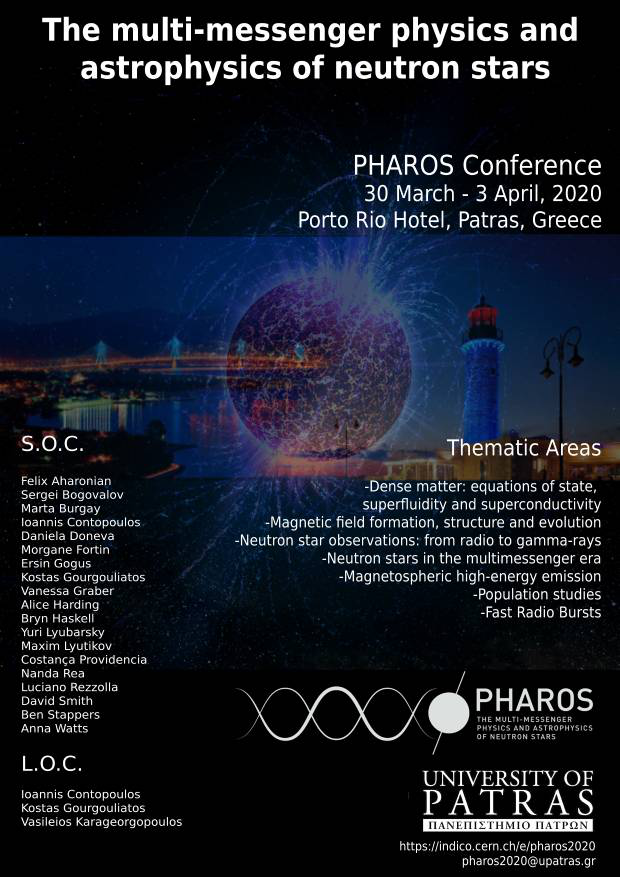Speaker
Description
With the recent, first detection of a binary neutron-star merger by gravitational-wave detectors, it proves timely to consider how the internal structure of neutron stars affects the way in which they are deformed. Such deformations will leave measurable imprints on gravitational-wave signals and can be sourced through tidal interactions or the formation of mountains. In this talk, I will summarise the formalism that describes fully-relativistic neutron-star models with elastic crusts undergoing static perturbations. This formalism primes the problem for studies into a variety of different mechanisms that can deform a neutron star. I will present results from integrating the perturbation equations for barotropic equations of state, which enables us to compute interesting quantities such as the tidal Love number. I will show how to use the results from these integrations to show when and where the crust starts to fail during an inspiral. I will also present the latest estimates for the maximum deformations that neutron-star crusts can sustain.

